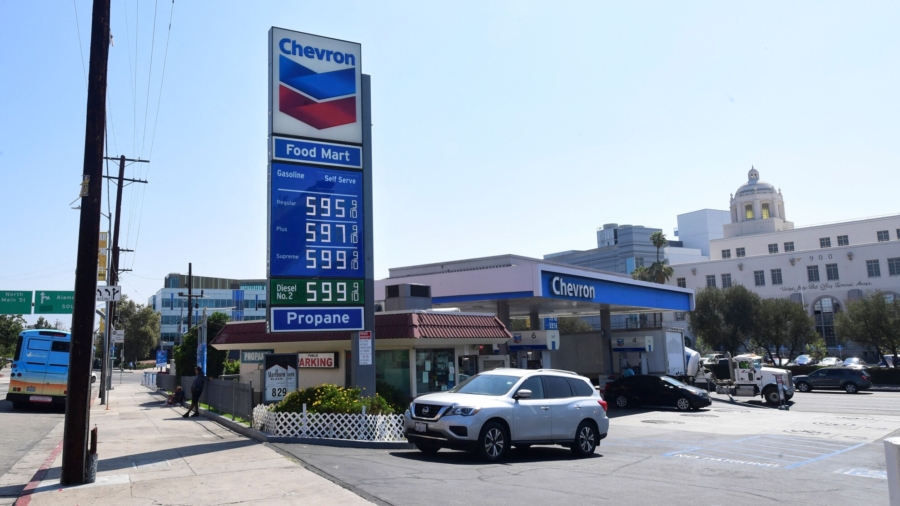The White House said Thursday that the Biden administration is not taking action at this time in response to gasoline prices hitting seven-year highs and elevated crude oil and natural gas prices, adopting a wait-and-see approach while insisting “all tools in the toolbox” remain at the ready.
White House Deputy Press Secretary Karine Jean-Pierre made the remarks at an Oct. 7 briefing in response to a question about what steps the administration was taking to keep rising gasoline, natural gas, and oil prices in check.
“We continue to monitor global energy market supply, and we’ll work with our agency partners to determine if and when actions are needed,” she said, noting that the administration reacted to a divergence between gasoline and crude oil prices over the summer by reaching out to the Federal Trade Commission (FTC) to investigate potential price collusion.
“We’re going to monitor the market and the means considering all tools in the toolbox to protect the American people. But as we said, there is no plan to take action at this time,” Jean-Pierre added, with her statement echoing remarks made earlier in the week by Energy Secretary Jennifer Granholm, who said the Biden administration was considering tapping the nation’s emergency oil reserves to tame soaring gasoline prices.
Following Granholm’s announcement, oil prices dropped below $75 per barrel, though after the Energy Department later clarified there was “no immediate plan” to tap the emergency crude stockpile, oil rallied.

Gasoline prices hit a fresh seven-year high this week, with Oct. 4 data from the Energy Information Administration (EIA) showing the national average for regular unleaded fuel running at $3.19 a gallon at the pumps.
“The probable causes for the increase are a slight uptick in demand and the high price of crude oil, which is stubbornly staying above $73” per barrel, the AAA said in an Oct. 4 note, which held out hope that the Organization of the Petroleum Exporting Countries (OPEC) and allies including Russia, known as OPEC+, would agree to boost production more sharply to ease the supply crunch.
The Biden administration’s chief plan to ease surging high gasoline prices was to persuade OPEC+ to agree to boost production more sharply to reduce the supply crunch. But that plan has thus far failed.
OPEC+ ended up announcing on Monday it would hold fast to the terms of an earlier agreement to boost oil production by 400,000 barrels per day (bpd) for the month of November, ignoring calls from the Biden administration—and others—to pump more crude.
The OPEC+ announcement sent crude prices higher, with U.S. West Texas Intermediate (WTI) crude futures touching a near seven-year high of $79.78, while Brent hit a three-year high of $83.47 this week.

Another tool in the Biden administration’s toolbox to tame gasoline prices is to ban oil exports, a move Granholm also suggested could be deployed.
“That’s a tool that we have not used but it is a tool as well,” Granholm said, though the Energy Department also later clarified that there was no immediate plan to ban oil exports.
Natural gas prices, too, have faced pressure, raising the prospect of sharply higher heating costs for American families in the event of an especially harsh winter. Earlier in the week, U.S. natural gas futures hit $6.312 per mmBtu, their highest level since 2008. They have edged down since, currently trading at around the $5.743 per mmBtu mark.
While gas prices in Europe and Asia have more than tripled this year, the United States has largely been shielded from the global crunch because of plentiful supplies. While U.S. natural gas has been trading around the $6 per mmBTu mark, it’s at around $30-plus in Europe and Asia.
Besides higher prices at the pump and costlier heating of homes over the winter, persistently elevated energy prices would add to inflationary pressures more broadly, affecting shipping and other costs.
Inflation has risen sharply in recent months, with the Fed’s preferred inflation gauge, the so-called core PCE index, rising to 3.6 percent in June and remaining at that level through July and August—the most recent month of available data—a level not seen in 30 years.
From The Epoch Times

